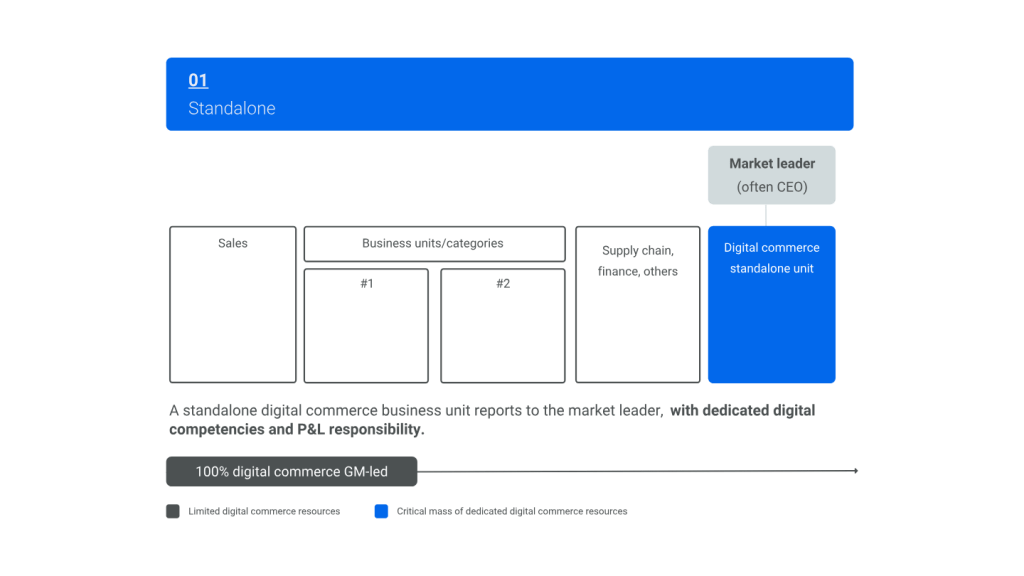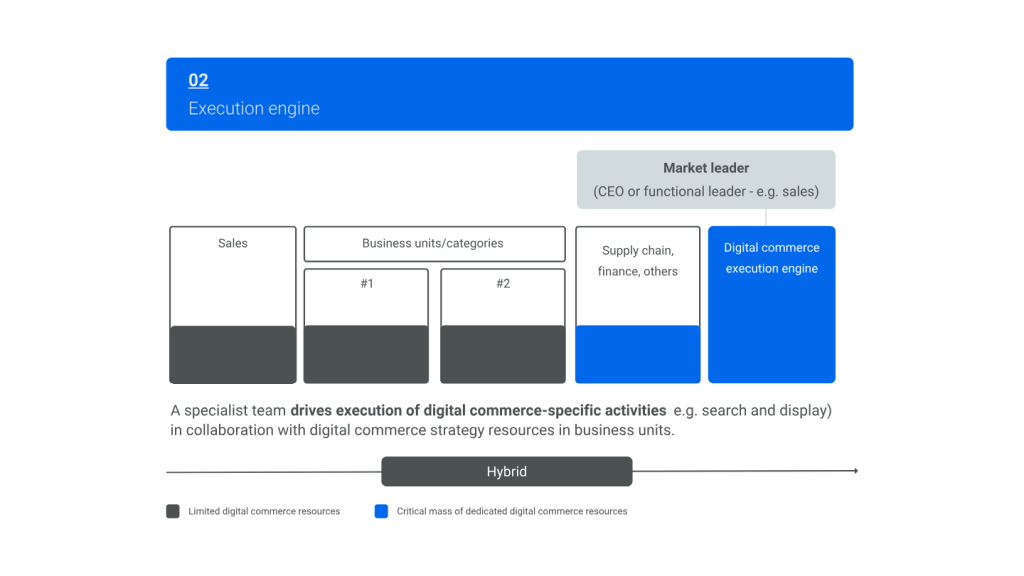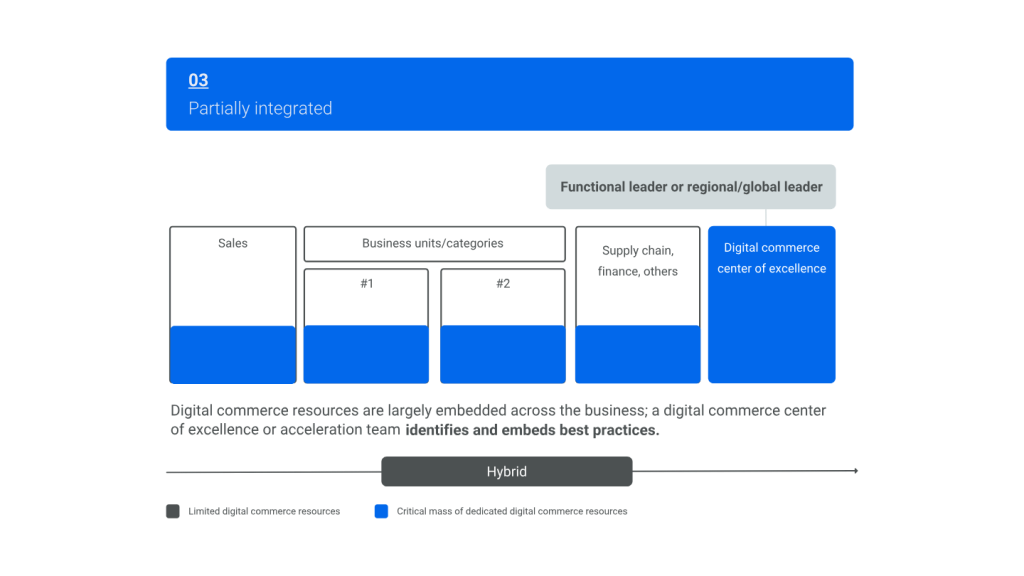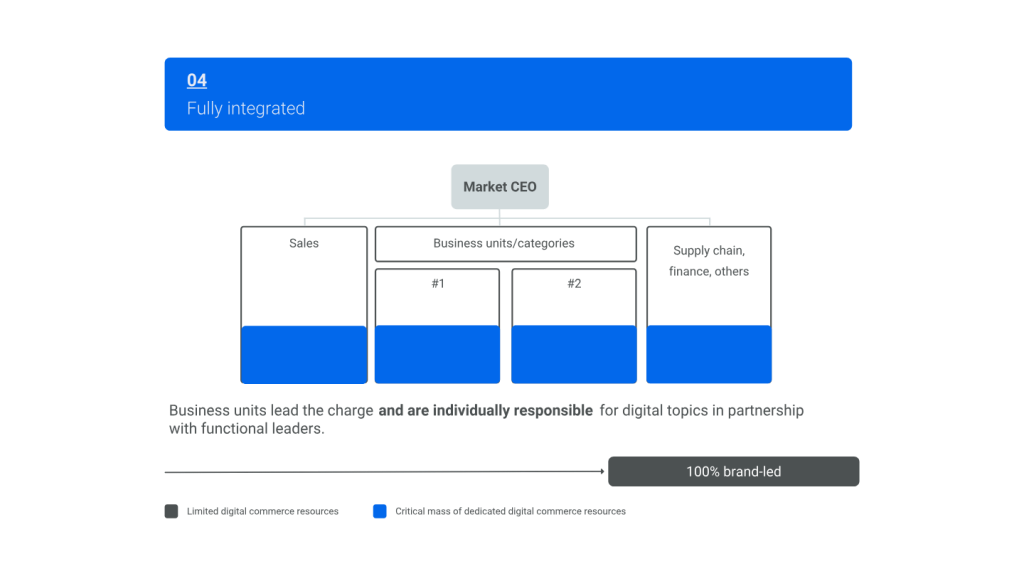People and tech in CPG operating models
The two most important factors when transforming internally to address the new digital reality are people and technology. McKinsey puts the priority on tech, and BCG on people. Clearly both need to be addressed and a key question to answer is how much if any external talent needs to be brought in to bring existing personnel up to digital speed.
In any event, teams that are already in place will be affected by the following four CPG operating models for ecommerce that have been identified by Bain & Company.
Standalone digital commerce team
This model often works as the first stage in digital adaptation. It is suitable for some companies but can create tensions when P&L is taken away from brand managers and reassigned to the standalone team. Brand leaders need to be on board with this kind of structure, and be quite digitally savvy to understand its necessity. Scaling is difficult with this kind of structure which is why it is usually a temporary stage.

Digital commerce hybrid model
This business model calls for a leader within each business unit that manages its digital commerce agenda. It is an evolution beyond the standalone model, with ecommerce responsibilities more distributed throughout the organization. This method can ensure some harmony by keeping P&L responsibilities in each division. Digital commerce strategists work within each unit and report to the specialist team that is the ‘Execution engine’ that handles digital shelf KPIs like search and ratings and reviews. For this model, ecomm expertise needs to extend into all business units.

Embedded digitization and a center of acceleration
This model, like the previous one, is a hybrid model. Here, digital capabilities are widely embedded across the business, but with the addition of a digital commerce center of excellence or acceleration. Unlike the execution team in the previous model that is concerned with KPIs, the CoA identifies and embeds best digital practices.
This system requires thought leadership and a culture of innovation to attract top talent.

Fully integrated ecomm operating model
The fully integrated model is appropriate for manufacturers for which ecomm is a priority. It’s most common for companies in China that have a digital-first agenda.

Once a new operating model has been put in place, it’s critical to remember that the model is there to serve a purpose, and it is always modifiable. The omnichannel continues to transform rapidly, so the business models that address it need to change accordingly.
It’s also critical to ensure that online and offline teams are integrating fully. The CoA needs to be an omnichannel team, bridging the gap between brick and mortar and online so that issues from supply chain to digital shelf details are covered.
Also, it is a useful practice to revisit the activity of a CoA every six months to review the extent of it’s connectivity to the rest of the organization and the state of its tech capabilities.
Embedding digital capabilities
BCG cites six factors that create a successful digital transformation. They emphasize that it’s only by embedding all six changes that a company actually succeeds, and that management must remain steadfastly committed to the digital shift:
- An integrated strategy with clear transformation goals.
This precise strategy needs to be tied to quantified business outcomes. - Leadership commitment from CEO through middle management. Not only the C-suite, but middle-management also needs ownership and accountability.
- Deploying high caliber talent. These resources may be internal or external.
- An agile governance mindset that drives broader adoption. Leaders need to enable A/B testing through the wider organization, making it part of the culture.
- Effective monitoring of progress toward defined outcomes. All objectives need to be clear and measurable, and outcomes too.
- Business-led modular technology and data platform. This tech architecture must be scalable and have a seamless ecosystem integration.
Typically, when CPGs successfully integrate one of these capabilities, it goes some distance to ensuring the others are also integrated, because they are all connected.
